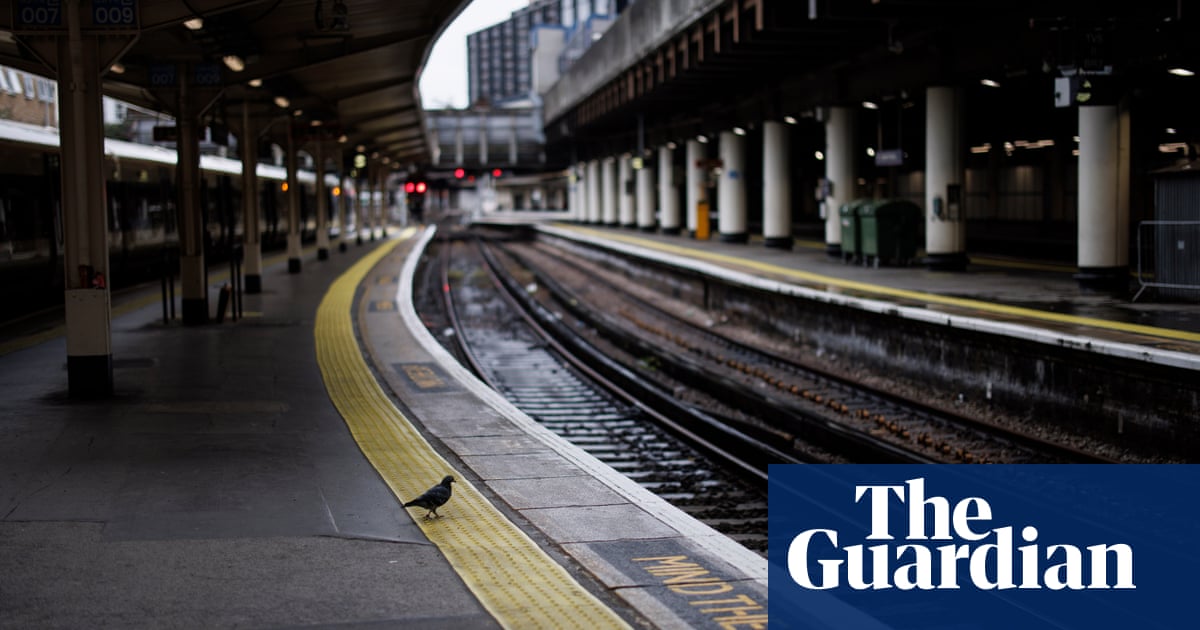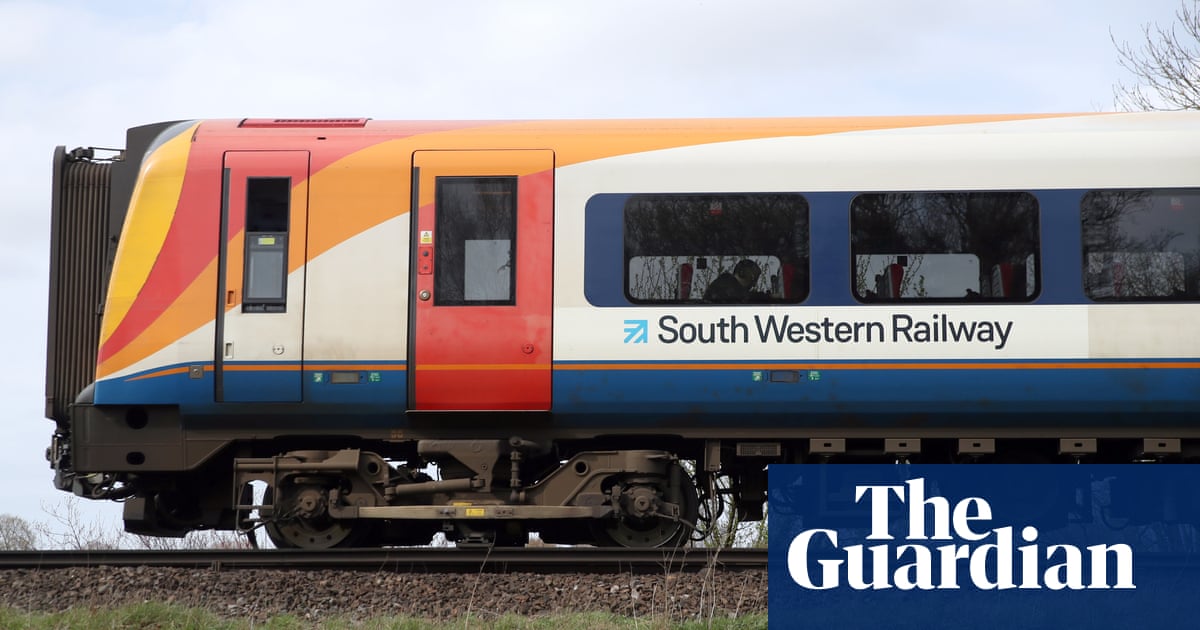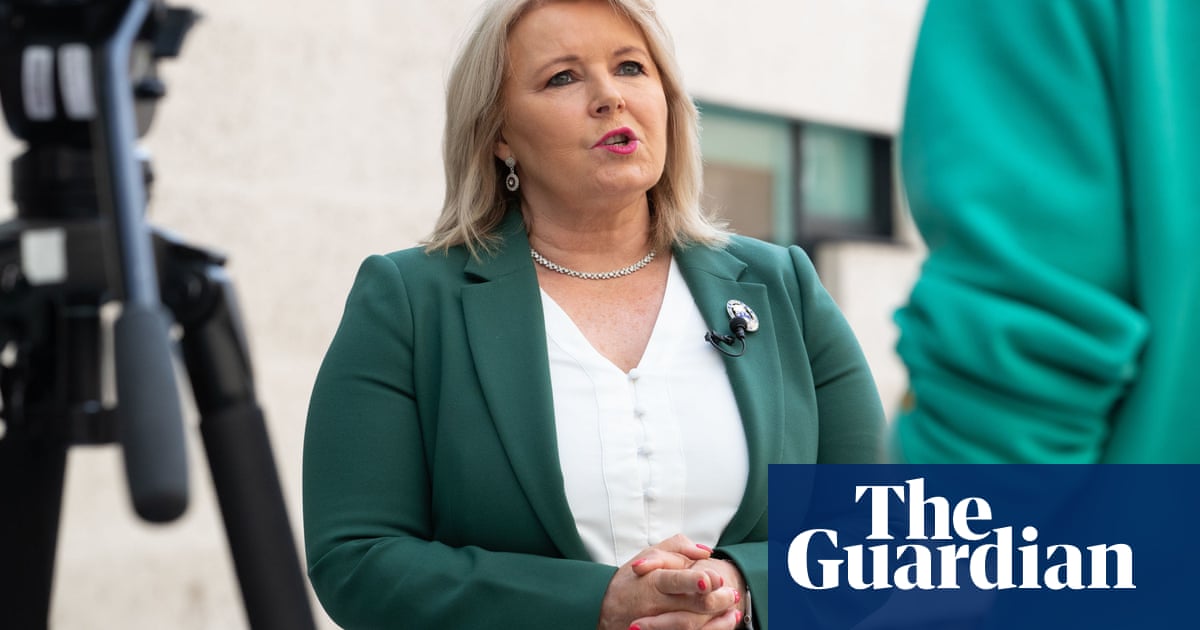
Train unions have said they could take industrial action and stop trains if drivers and passengers are not protected from coronavirus, after photos emerged of packed London Underground services as many people returned to work following seven weeks of lockdown.
Transport for London indicated that the number of commuters remained relatively low at 63,000 on Wednesday morning, up 7% on the previous day.
Photos taken at Finsbury Park station on the Victoria line showed commuters – mostly men – standing inches apart in carriage door wells with few wearing masks. Men have died from coronavirus at twice the rate of women in England and Wales, according to the Office for National Statistics.
As the first lockdown relaxation came into place the Rail, Maritime and Transport (RMT) union said Boris Johnson’s return to work message was “fraught with danger”.
Mick Cash, the general secretary, said strike action could be necessary to “protect workers and passengers”, adding that staff would be entitled to refuse to work if they did not feel safe.
“If that’s what needs to be to keep people safe then we will stop trains,” he told Sky News.
Despite an appeal by TfL for passengers to wear face coverings on public transport, it appeared that few were doing so.
Tube workers also said there was a “complete shambles” during the suspension of part of the Victoria Line after reports that a passenger had collapsed.
“Social distancing during the peak was a joke. During the suspension our carriages were heaving. It will get worse,” said one worker.
One woman going to work in a laboratory said it had been easy to keep two metres apart from other people for most of the lockdown. But since last week her commute had become significantly busier, with less effort to distance, she said. People had also stopped using face masks and gloves on buses and trains.
“People used to queue for the bus socially distanced, or stand to one side on the pavement, but now they don’t move over. People don’t care as much any more,” she said. “I think if they haven’t got sick by now, they think they’ve got away with it.”
The transport secretary, Grant Shapps, said the government was asking commuters to be sensible, while admitting he would not get on a tube or bus.
Some photos, for example one taken at Liverpool Street station, one of the busiest interchanges for commuters from Essex and east London, showed some people were able to adhere to physical distancing.
Some buses in the capital were reported to be busier than normal following the prime minister’s message that people should return to work if possible from Wednesday.
The Automobile Association said the roads in England, the only country in the UK where the relaxations apply, were about 10% busier on Wednesday.
TfL said on Monday it would have to reduce passenger numbers to 13-15% of normal levels to achieve physical distancing of two metres.
With daily numbers last April of nearly 4 million, that would mean limiting the number of people using the network to get to work to as few as 600,000.
It said passenger numbers up to 10am on Wednesday were 7.3% higher than the same day last week but were still a fraction of the normal level. Just over 63,000 passengers travelled between 7am and 10am, compared with more than 1 million at the same time this time last year.
In its plan for the capital published on Monday, TfL urged people to stay at home, only go to work if it is essential, and to wear face coverings on the network.
Johnson said in his address to the nation on Sunday that those unable to work from home should start returning to work from Wednesday, but urged people to avoid public transport and to drive, cycle or walk.
Unions say this is not a viable option for many in the capital who do not have a car and live too far away from their place of work to cycle or walk.
TfL is progressively increasing the frequency of trains to reverse the reduction in services during lockdown, with a view to operating at 70% of normal capacity by next Monday.
It will also reopen some of the 37 stations it closed, but it said these would not include lift-only stations because it would be impossible to maintain safe distances.












